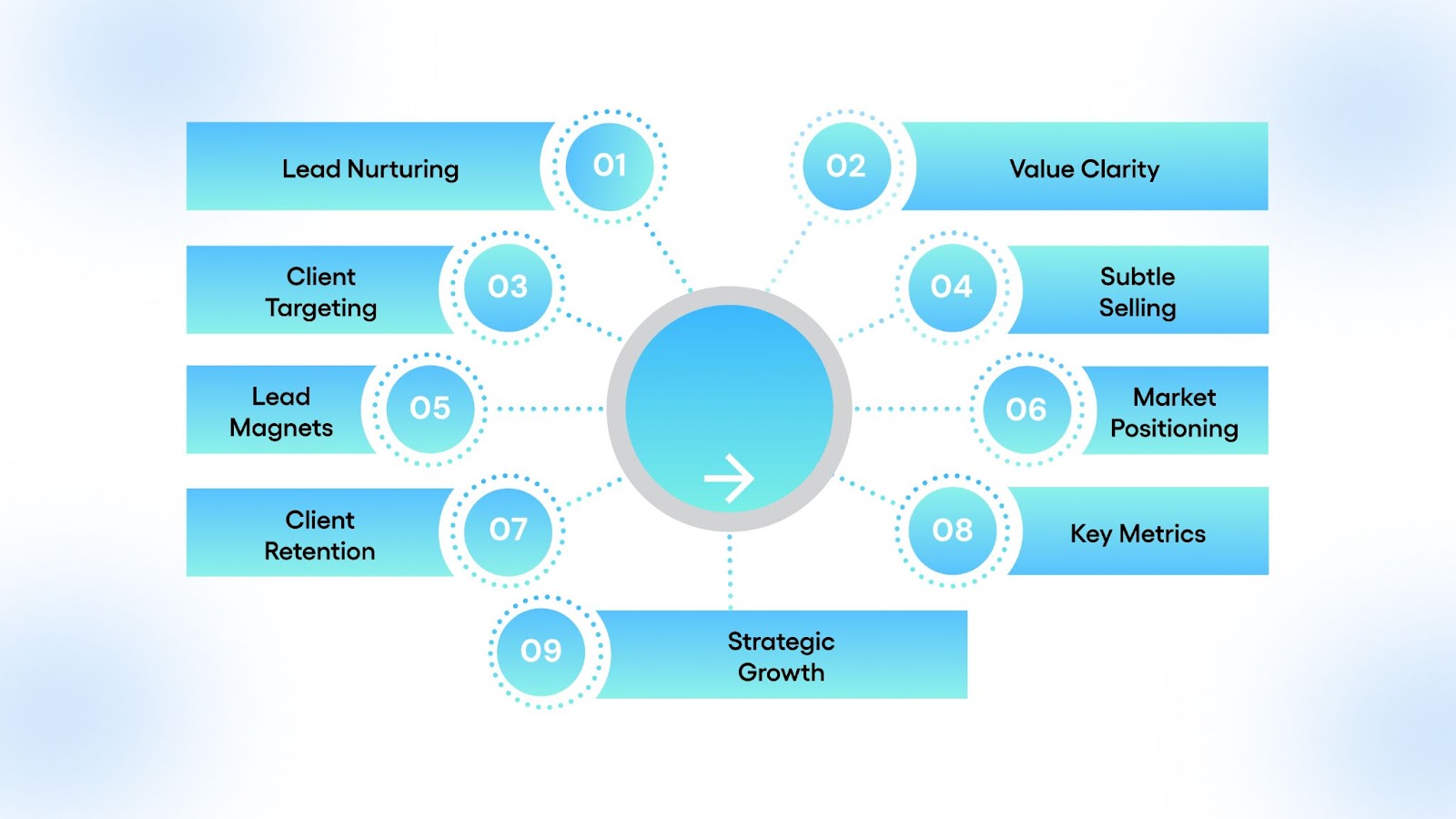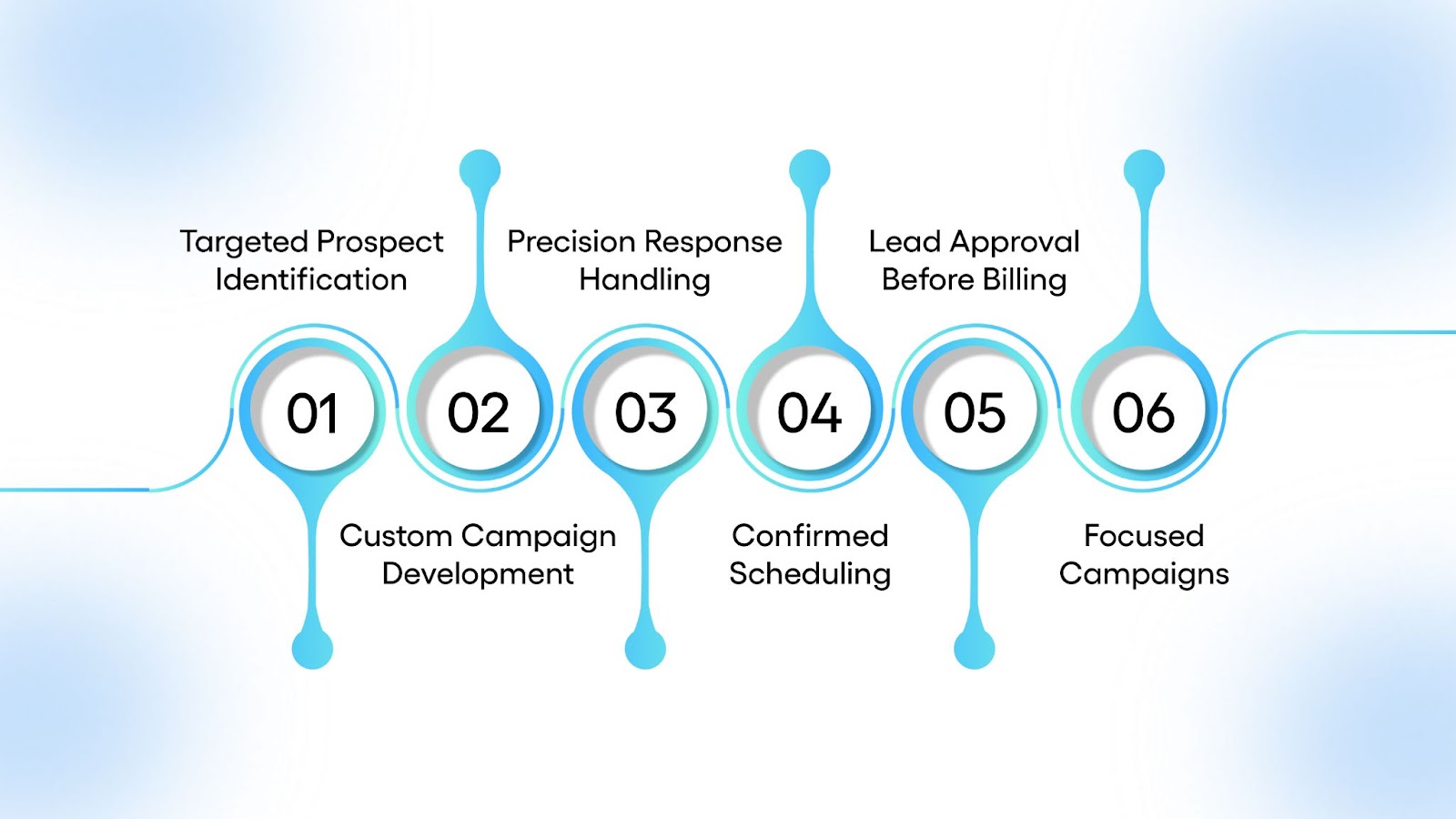
9 MSP Growth Tactics That Actually Work

The managed services space has matured. What once relied on technical know-how and quick fixes now demands structured offerings, measurable outcomes, and long-term value. As margins tighten and competition sharpens, revenue growth for MSPs is no longer about simply adding more clients or offering more services. It’s about strategic alignment, defining who you serve, how you solve their problems, and how efficiently you deliver.
MSPs today face a dual challenge: sustaining profitability while adapting to client expectations that evolve faster than most operating models. Many providers still rely on outdated sales tactics or broad, unfocused service catalogs. But the firms that are seeing consistent growth are the ones tightening their value propositions, refining their processes, and investing in the right growth levers.
This article outlines nine proven tactics MSPs are using right now to increase revenue with intention, not through shortcuts, but through strategies rooted in operational clarity, market focus, and client retention.
Key Takeaways
- Focus on fewer, better-fit clients instead of chasing everyone.
- Make your services clear, outcome-focused, and easy to understand.
- Use your website to guide prospects with clarity, proof, and simple next steps.
- Keep in touch with useful, consistent communication, especially through email.
- Offer practical resources (checklists, guides) that earn trust and capture leads.
- Specialize in one market to build authority and win better business.
- Retain clients through proactive communication and visible results.
- Track only the numbers that directly affect profit and client health.
- Expand only into areas where you can deliver with confidence and consistency.
9 Practical Ways to Boost Your MSP Revenue

1. Build and Use an Email List That Actually Drives Leads
Email marketing is one of the few marketing channels MSPs fully control. Unlike algorithms or ad platforms that shift without notice, a well-maintained email list gives you direct, consistent access to your prospects and clients. But to be useful, it must be treated as a business asset, not a list you blast occasionally with a generic newsletter.
Start with the right foundation: gather emails from people who’ve shown real interest. That includes prospects who downloaded a resource, clients who opted into updates, or attendees from a local workshop or webinar. Quality beats quantity. Ten engaged contacts who recognize your name are worth more than a hundred cold entries who never open a message.
Once you’ve built a focused list, stay in touch with purpose. Don’t rely on fluffy updates or recycled vendor content. Instead, deliver short, specific messages: explain a recent security trend that affects small businesses, outline changes in compliance laws, or offer tips to reduce downtime. Educational, relevant content earns attention. Promotional content only works when it’s rare, timely, and clearly solves a known issue.
What matters most is consistency. Monthly or twice-monthly emails keep your MSP top of mind without overwhelming anyone. When someone on your list is finally ready to switch providers or solve a pain point you’ve talked about? You’ll be the one they already trust.
Read: A Guide to Digitizing Your B2B Sales Process
2. Get Clear on What You Offer
Too many MSPs operate with service menus that are either bloated or vague. "Managed IT support," "cloud services," or "cybersecurity" mean different things to different clients, and that ambiguity often leads to confusion, hesitancy, or price-driven objections.
Growth begins when your offerings are clear, focused, and rooted in specific value. That starts with auditing what you currently provide. Which services consistently lead to satisfied clients and healthy recurring revenue? Which ones feel like custom one-offs, or constantly strain your team? Eliminate or deprioritize anything that doesn’t contribute to sustainable growth.
Instead of listing features or tools, define your services by the problems they solve. Are you reducing downtime for law firms with outdated infrastructure? Are you keeping healthcare clinics HIPAA-compliant and audit-ready? Are you standardizing onboarding and offboarding for hybrid workforces?
Clarity also extends to packaging. Clients should know what’s included, what’s not, and what outcomes they can expect. Tiered bundles, with room for limited add-ons, simplify both sales conversations and delivery. When your services are framed around real-world problems and outcomes, not just tech jargon, they’re easier to sell and harder to commoditize.
3. Focus on Clients Who Actually Fit
Growth isn’t about reaching everyone. It’s about identifying the right clients, those whose needs align with your strengths, and whose environments match what you’re built to support.
Start by looking at your current client base. Which clients are the most profitable, easiest to work with, and most satisfied? Patterns will emerge, perhaps by industry, size, regulatory complexity, or internal IT maturity. Use those patterns to define your ideal client profile. This is not a hypothetical exercise; it’s the basis for every sales and marketing decision you’ll make going forward.
Targeting the right clients lets you standardize your processes, streamline support, and improve client outcomes. It also prevents your team from being pulled in conflicting directions, trying to support incompatible environments.
Once you’ve defined your ideal client, your website, proposals, and outreach should reflect that clarity. The more specific you are about who you serve, the more you stand out to them, and the more confident they’ll be in your ability to help.
4. Build a Website That Sells Without Selling (A site that guides, not pushes)
A website shouldn’t be a digital brochure. For MSPs, it’s often the first serious impression a prospect has, and if it’s vague, cluttered, or unclear, they’ll bounce long before you get a chance to explain what makes you different.
The most effective MSP websites do three things quickly:
- Show who you serve
- Explain what problems you solve
- Offer a clear next step
Avoid generic headlines and long lists of technical services. Instead, make your value obvious from the first scroll. For example, “Reliable IT for Law Firms with No In-House Team” communicates far more than “Managed Services Provider.”
Include proof. Case studies, testimonials, or even a short sentence showing the number of endpoints you manage, all of it builds trust. Avoid stock photos and template language. A real, specific voice carries more weight.
Lastly, guide your visitor. A free resource, a discovery call link, or a scheduling form should be easy to find. Growth doesn’t come from shouting louder; it comes from being clearer.
5. Create Downloadable Resources That Pull in Leads
People don’t hand over their contact info for nothing. If you want leads, offer something worth the trade. That might be a one-page checklist on securing remote teams, a short guide to IT budgeting for small businesses, or a template for internal cybersecurity policies. The format doesn’t matter as much as the usefulness.
Well-crafted resources serve two purposes: they attract potential clients and position you as someone who understands their challenges. The content doesn’t need to be long; it just needs to be relevant, practical, and aligned with your ideal client’s needs.
Promote your resources through your site, your email list, and any referral or partner channels you have. Make it easy to access, easy to share, and make sure the next step is clear, whether that’s booking a call, joining your email list, or learning more about your services.
Over time, a strong resource library becomes a long-term asset that works even when you're not actively selling.
6. Position Your MSP as an Expert in One Market
Generalist MSPs often struggle to grow because they have to re-educate the market every time. Specialists, on the other hand, build authority within a single space, be it legal, healthcare, finance, or a certain type of business infrastructure.
Being known for one thing is not a limitation. It's a multiplier. You build deeper knowledge, develop faster solutions, and create processes that are tailored, efficient, and more profitable. Your content and sales messaging become sharper. Word-of-mouth spreads faster because you’re memorable.
Start with one market where you already have a foothold. Document the common challenges, compliance needs, and operational quirks. Build your services, language, and positioning around that. Over time, you’ll earn not just more business, but better business.
Read: Top 8 MSP Lead Generation Strategies
7. Make Sure Your Clients Stick Around
Client retention is revenue protection. Losing clients due to miscommunication, slow response times, or perceived indifference wipes out the progress your sales and marketing efforts create.
The foundation of retention is proactive communication. Regular check-ins, not just when something breaks, help clients feel seen and supported. Use structured account reviews to discuss results, identify new needs, and flag any concerns before they turn into churn.
Responsiveness matters, but so does visibility. Clients should know what you’re doing, even when everything is running smoothly. Simple reporting, updates on completed work, or advance notice of changes to their systems go a long way.
Clients who stay longer spend more, refer more, and become the foundation of long-term MSP growth.
8. Track the Numbers That Actually Matter
You can’t grow what you can’t measure. But most MSPs either track too little or too much of what doesn’t matter. Focus on the metrics that tie directly to revenue, client satisfaction, and operational efficiency.
This includes:
- Monthly recurring revenue (MRR)
- Client churn rate
- Average revenue per client
- Cost per ticket
- Utilization rate of technical staff
These numbers tell you where you’re healthy, where you’re leaking profit, and where to adjust. But numbers don’t matter in isolation; track trends over time, compare across client segments, and tie the data back to decisions.
Keep your financial models current. Know your margins on each service tier. Build simple forecasts, not spreadsheets for their own sake, but tools that guide action. Growth without financial visibility is guesswork, and guesswork breaks under pressure.
9. Expand with Purpose—Only Where You Can Win
Growth for its own sake leads to scattered teams, unfocused service offerings, and client churn. But intentional expansion, into new markets, new geographies, or new services that fit your core, creates stable, scalable progress.
Before you add a new offering or target a new region, ask: Does this play to our strengths? Can we support this with our current infrastructure, or does it require a full rebuild? Can our team deliver with confidence?
Don’t jump into trends because competitors are. Expand where your current expertise solves new, similar problems. For example, if you already serve accounting firms with strict compliance needs, consider financial advisors or insurance agencies, not an unrelated field with a different risk profile.
Smart expansion builds from a strong base. It doesn’t stretch the team; it stretches the impact of what already works.
The Real Challenges Holding Back MSP Growth
For most MSPs, growth isn’t blocked by a lack of ambition. It’s blocked by the daily weight of client tickets, staffing pressures, outdated systems, and unclear direction. You want to scale, but there’s no room to lift your head, let alone rethink your strategy.
Even when the work is steady, it’s easy to get stuck. You’re juggling sales calls with support escalations. You’re trying to market your services while also updating documentation and managing vendors. The business runs, but it’s not evolving.
And when you do try to grow, new challenges surface:
- Services that once worked no longer scale.
- Client expectations shift, and your offer starts to feel generic.
- You add new tools, but they add more confusion than clarity.
- Hiring the wrong fit or onboarding a bad-fit client sets you back months.
It’s not that you’re doing anything wrong. It’s that MSP growth isn’t just about doing more, it’s about doing better, and doing it in the right order, with the right foundation. That’s the part that’s hard to figure out on your own, especially when your time and focus are already stretched thin.
TLM: Your Partner in Building a Stronger, Refined MSP
Growth doesn’t stall because of technical gaps. It stalls when your pipeline lacks consistency, when outreach efforts fail to connect, and when valuable time is lost chasing the wrong conversations. TLM supports MSPs by solving the core issue behind that slowdown: the absence of qualified, decision-ready leads.
We specialize in lead generation and appointment setting for MSPs, designed to bring structure, accuracy, and accountability to your sales efforts.
Here’s what we deliver:

- Targeted Prospect Identification
We build prospect lists based on your exact criteria, industry, geography, company size, decision-maker titles, and service focus. Every list is assembled with care, not pulled from a static database. - Custom Campaign Development
We design and manage outbound campaigns that reflect your services and your voice. These aren’t templated blasts—they’re personalized sequences written to speak directly to the challenges your clients face. - Precision Response Handling
We review and qualify all replies manually. Interest is evaluated carefully, looking for indicators that match your service model, capacity, and client profile. No vague leads or mismatched introductions. - Appointment Scheduling with Confirmation
Once a qualified prospect is identified, we coordinate schedules and confirm meetings on your behalf. Each appointment is verified before it reaches your calendar, reducing no-shows and uncertainty. - Support for Targeted and Industry-Specific Campaigns
We run focused outreach tailored to each industry, with campaigns that can also target specific services such as cybersecurity, compliance, infrastructure management, staffing, software, and warehousing or shipping.
We operate quietly and methodically in the background, building the momentum your sales process depends on. If you're ready to shift from sporadic outreach to structured, scalable lead generation, you're in the right place.
How a Pennsylvania MSP Secured a $20,000 MRR Deal Through Targeted Outreach
When a Pennsylvania-based MSP set out to grow their footprint in highly regulated industries, they faced a common challenge: a lack of traction. Their team had the technical capability, but they weren’t getting in front of the right prospects, and when they did, they struggled to build immediate credibility in markets where compliance and trust are non-negotiable.
Working with TLM, the MSP launched a focused campaign targeting clinical research firms, organizations with critical IT demands and strict regulatory oversight (HIPAA, 21 CFR Part 11). Their outreach wasn’t broad or generic. It was built specifically to address the concerns of IT leaders and compliance officers in life sciences.
The campaign combined targeted contact discovery with an 8-touch, persona-specific email sequence. Every message addressed real pain points: gaps in data security, vendor fragmentation, compliance risk, and downtime affecting clinical trial workflows.
Once a qualified lead was identified, TLM booked the meeting and ensured the MSP’s technical team was prepared. A solution architect joined the first call, allowing the MSP to lead with substance, not a script. From there, they delivered a clear, phased proposal outlining how their services would reduce risk, stabilize operations, and meet regulatory expectations.
The result was a signed 3-year agreement worth $20,000 in monthly recurring revenue, totaling $720,000 over the life of the contract.
More importantly, the MSP repositioned itself from a generalist IT provider to a strategic compliance partner for clinical infrastructure. That shift not only won the deal but opened the door to future growth in similar verticals.
Wrapping Up
MSP revenue growth doesn’t come from doing more; it comes from doing what matters, with consistency and precision. The firms that grow aren't necessarily the ones offering the widest range of services, but the ones that understand their market, speak to specific problems, and follow through with structure behind the scenes.
Each of the nine strategies in this article leads back to the same idea: clarity over complexity. Know who you're serving, why they choose you, and how to keep that relationship strong. Build systems that support that clarity, across marketing, service delivery, and operations.
None of these shifts happen overnight. But with the right focus, support, and cadence, they do happen, and when they do, growth becomes predictable instead of sporadic.
If you’re ready to bring structure to your outreach and start more of the right conversations, TLM can help. Book a call to learn how we support MSPs ready to move with intention.
FAQs
1. What’s the fastest way to boost MSP revenue?
Focus on high-impact, targeted strategies, like email outreach, clear service positioning, and client retention, to generate growth without adding complexity.
2. How can MSPs attract better-fit clients?
Audit your current client base to identify your most profitable and easy-to-work-with clients, then narrow your focus to attract more like them with clear messaging and offers.
3. Why do some MSPs struggle to scale despite having great services?
Many MSPs hit a plateau because they rely solely on technical excellence without pairing it with strong sales, marketing, and client relationship systems.
4. What should MSPs measure to ensure sustainable growth?
Track just the essentials: MRR, churn rate, average revenue per client, and service delivery efficiency—rather than drowning in data that doesn’t drive decisions.






